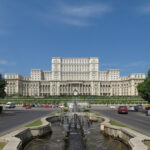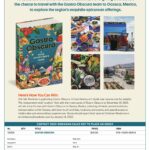 You finally arrive in Italy- a little jetlagged, tired of airplane snacks, and burnt out on the three barely tolerable romantic comedies you endured on your flight over – and you can’t wait to dig into that transcendent Italian food you’ve been dreaming of….Then you’re foiled. The pizzeria doesn’t have seats? The caffè won’t serve a sandwich? I can’t get wine by the glass? Like most European countries, Italy has it’s own unique system of eating establishments, and they rarely deviate from the rules. So how do you get the food you want? Biba’s Italy, by Biba Caggiano, provides a decoder list to what exactly you can expect in the wide variety of food venues in Italy – a rundown, which may prove invaluable to both your wallet and stomach next time you’re abroad.
You finally arrive in Italy- a little jetlagged, tired of airplane snacks, and burnt out on the three barely tolerable romantic comedies you endured on your flight over – and you can’t wait to dig into that transcendent Italian food you’ve been dreaming of….Then you’re foiled. The pizzeria doesn’t have seats? The caffè won’t serve a sandwich? I can’t get wine by the glass? Like most European countries, Italy has it’s own unique system of eating establishments, and they rarely deviate from the rules. So how do you get the food you want? Biba’s Italy, by Biba Caggiano, provides a decoder list to what exactly you can expect in the wide variety of food venues in Italy – a rundown, which may prove invaluable to both your wallet and stomach next time you’re abroad.
Ristorante: Italian restaurants are as diverse as the Italian landscape. Some elegant, expensive restaurants are the domains of celebrity chefs who specialize in creative cooking. Others are simpler establishments that serve the traditional food of the area. Restaurants will provide the customer with a printed menu and a wine list.
Trattoria: A small, unassuming restaurant, generally family owned, that serves traditional homestyle food at reasonable prices. Usually serving a limited number of dishes with less polished service, the trattoria is often a home away from home for many. Stay away places that offer a “a menù turistico,” which is a set meal for tourists that offers very standard, often uninspired food.
Osteria or Hostaria: Generally a tavern or a wine shop that serves wine by the glass and offers a limited number of homey dishes. Soups, cheeses, cold cuts, savory breads and pickled vegetables may be among the offerings.
Enoteca: An urban, more gentrified wine bar than the humble osteria. Enoteche serve wine by the bottle and by the glass, and many have added more ambitious dishes to their menus.
Tavola Calda: An informal eatery that serves a selection of hot dishes to eat informally, standing up or to take out.
Rosticceria: A shop the sells food to go, primarily roasted and spit-roasted meats, roasted potatoes, and sautéed vegetables at reasonable prices.
Pizzeria: Pizzerias are divided into two categories: shops that make pizza and sell it by the slice or by square pieces, and regular pizzerias where you can sit at a table and choose from the many toppings. Today these informal establishments often serve a small selection of pasta, salads, calzone, and savory pies as well.
Paninoteca: A sandwich shop. Panini stuffed with seafood, ham, vegetables, and cheeses, alone or in appetizing combinations can be bought there.
Gelateria: An ice cream parlor. Italians rarely make gelato at home, nor do they regularly order it in restaurants or trattorie, for they prefer to walk to any gelateria or caffè and choose from a large number of flavors.
Pasticceria: A pastry shop where pastries can be purchased to eat there or take away. Often it will have a bar area that serves espresso, cappuccino, tea and so on.
Bars and Caffès: A bar is a place to stop for a quick espresso, cappuccino, tea, pastry or aperitivo, which are generally consumed standing at the counter. (An Italian bar has nothing in common with an American bar.) A caffè is a bar that has the addition of inside and possibly outside tables and has waiter service.





No Comments